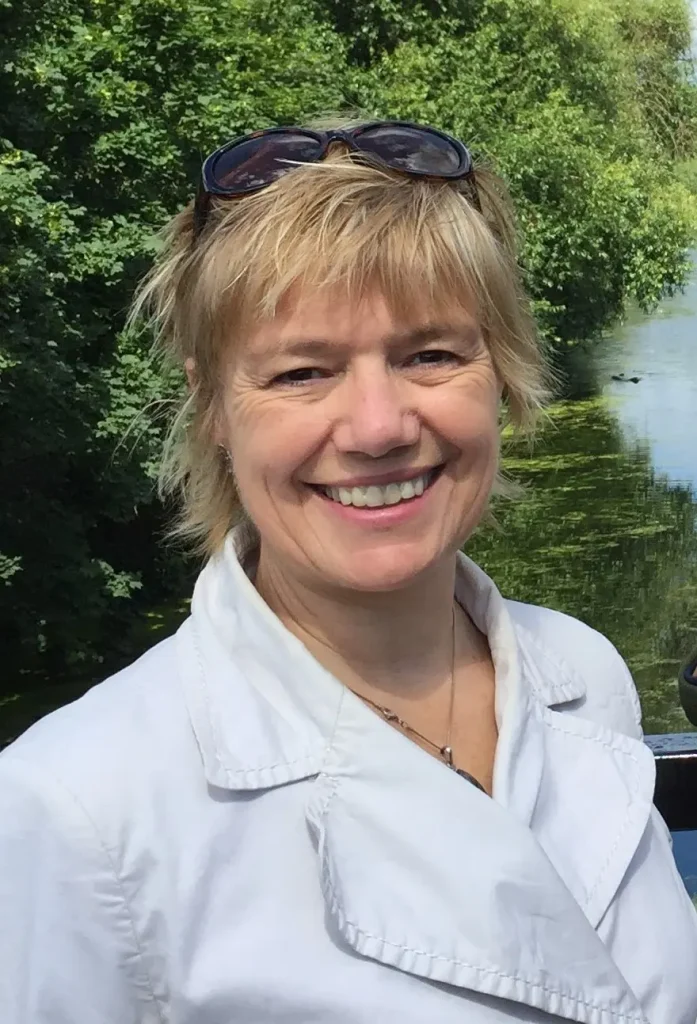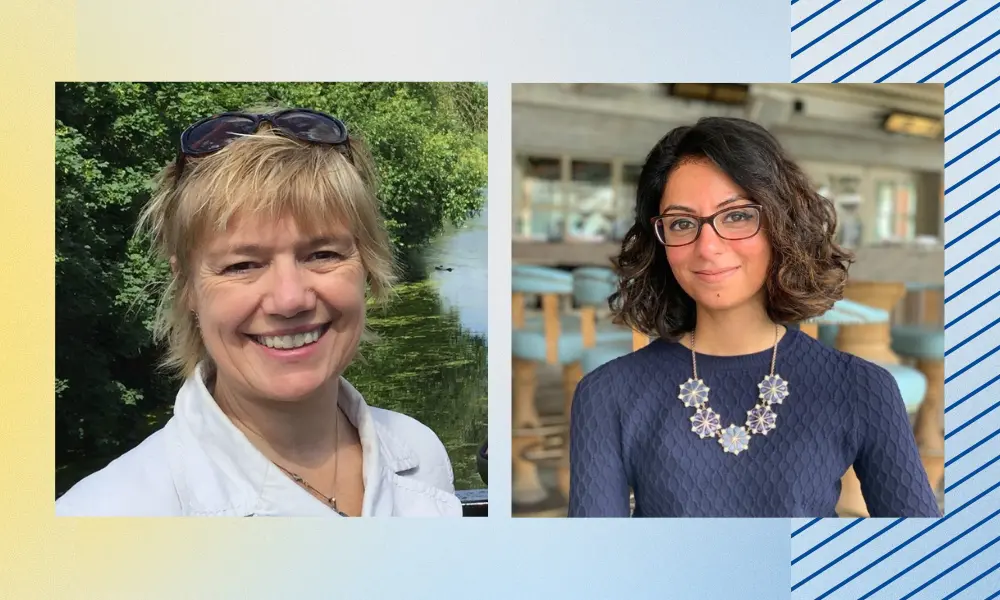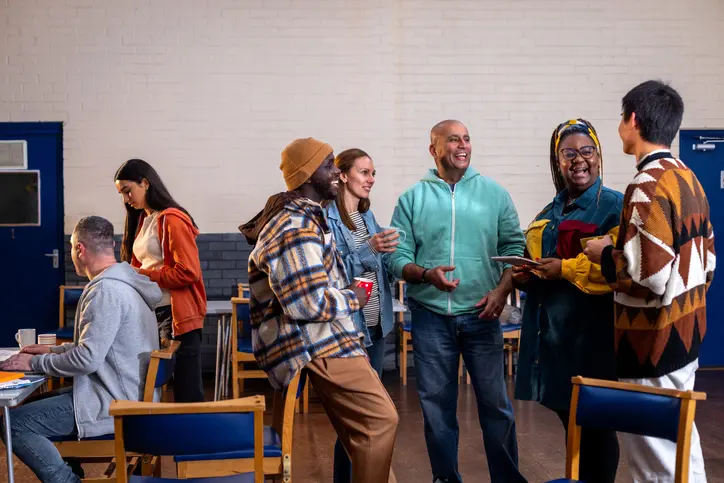Z-arts is a young people’s arts centre in Manchester.
- Young people’s arts centre launched in 2000 in Manchester as Zion Arts Centre and rebranded to Z-arts in 2012
- Engages with tens of thousands of people annually in outreach programmes with local communities and schools
- 230-seat theatre hosts year round programme of international touring children’s productions
- New children’s library opened in 2022
- Family escape room opened in 2023
- z-arts.org
Last year, they piloted a chair development programme which supported trustees from backgrounds under-represented at board level to gain the skills, confidence and experience needed to take on a leadership role.
Key learnings from their pilot board development programme
- Co-produce the programme with your trustees for maximum impact. Different trustees will need developing in different ways so assess their specific needs before you start the programme.
- Allow at least a year for the programme to run. I believe we could have given our trustees even more useful experiences if time had allowed.
- We didn’t apply for any funding in order to run the programme as time was too tight. But it didn’t actually stop us from doing much. With funding in place we would have been able to offer travel expenses.
- If we run a similar programme again, we would ensure each participant was able to have a practice run at chairing a meeting. During this pilot, only one trustee was able to do this. Feedback from our participants suggested they would all have found it useful.
- According to our trustees, the most useful aspect of the programme was meeting and talking to chairs of other arts organisations.
- Our trustees were given lots of links to online reading to do in their own time. This allowed them to fit their learning around their other commitments.
- Don’t assume you are looking to appoint a single chair. Explore other models including co-chairs and a rolling chairship.
We asked CEO Liz O’Neill (LO) and new co-chair Nazma Noor (NN) how it went.


Why did you decide to run a pilot board development programme?
LO: The end of 2022 saw our existing chairship at Z-arts up for renewal. Rather than approaching the search in the traditional fashion, we had the perfect opportunity to tackle head on our lack of diversity in leadership, which was unfortunately as much in evidence at our grassroots, inner city Manchester arts centre as anywhere else.
Our pilot nine-month chair development programme supported five of our 11 trustees, all people from backgrounds currently under-represented at board level, to build on their readiness to take on the role of chair of the board. The participating trustees all identified as members of one or more of the following communities: working class, global majority, young people, care-experienced and LGBTQ+.
What did the programme involve?
LO: As there was no existing model for this kind of work, we started with a blank canvas.
The participants put forward a list of topics they wanted to explore. In addition to increasing their general knowledge and confidence, the following items were proposed as their priorities for development:
- Legal responsibilities and formalities (motions, elections, official approvals, running meetings)
- The difference between being a trustee and a chair
- Tips for managing being a chair alongside full-time work
- Relationships between chairs,execs, staff
- Different styles of chair leadership in different organisations/circumstances
- Transferable skills (work/life), and leadership: thinking strategically, skills/techniques for having difficult conversations, communication skills in a different arena, people skills, management of processes and people.
How did delivering the programme work practically?
LO: All of our participants had busy lives and full time jobs including a secondary school drama teacher and a carnival producer. To make it as accessible as possible, the programme was designed to include a mix of asynchronous online learning, online shadowing, face-to-face mentoring and attendance at training courses and an online conference.
Taking into account the large commitment made by participants – we estimated trustees would need to assign between 50-60 hours between March and November 2022 – we agreed that everyone who completed the programme would be guaranteed an interview for the chairship.
Throughout the pilot, participants met with a range of chairs from other arts organisations, including HOME in Manchester and Exeter Northcott Theatre. Trustee feedback showed they found this particularly valuable as it gave clear insight that there is more than one way to be a successful chair.
Our trustees also found great value in attending another arts organisations’ board meeting. ARC Stockton Arts Centre invited our participants to virtually participate and put questions to the chair and trustees afterwards. ARC also found the experience very enlightening and asked to shadow back one of our future meetings.
The group really appreciated sessions that specifically explored leadership. We worked with Charles Lauder, a former chair of Manchester’s Contact Theatre, who ran mentoring sessions at the start and towards the end of the programme.
What was the outcome?
LO: At the start of the programme, some participants scored themselves as low as 5/10 on feeling equipped to take on the role of chair. By the end, they all scored themselves an 8 or 9.
We ended up appointing two new co-chairs, as that was the preferred model proposed by our trustees. Co-chairs Nazma Noor, a digital marketer, and Lizi Ransome, a secondary school drama teacher with a background in film, TV, radio and theatre acting, have a fantastic complementary skill set and are already working very well together.
How have the first few months of the new co-chairship been?
LO: Since taking on the role as co-chairs at the start of the year, Nazma and Lizi have already hosted a strategic planning away day for trustees, which included a session on diversity, outreach and inclusion. They have chaired their first board meeting, and have welcomed two new trustees, which has increased our cultural diversity to 40% of the board.
NN: It’s been a great start, largely because I’ve felt very supported and reassured to have Lizi as my co-chair. The timing of me taking on the co-chair role has coincided with me making a big move in my day job and taking on a new role professionally, so all round I really feel like I am stepping up.
One of the aspects of the development programme that I am continuing personally is learning by speaking to other chairs and trustees of other boards, particularly if they’re from a diverse background. I have also put in some requests to shadow other arts organisation board meetings.
Nazma, what changed during the development programme that made you believe you could take on the role?
NN: Speaking to other chairs, hearing their varying stories and experiences and finding things I could relate to made a huge difference to me. In particular, one of the chairs we spoke to talked about how she didn’t have previous experience applying for Arts Council Funding, and yet this was one of the first things she had to oversee when she became chair.
Our discussions around different chairing model (co-chairs, chair and vice-chair, deputy chairs etc) also really opened my mind to different possibilities and ways of working that I hadn’t considered before.
In one of the final sessions we had with a very experienced former chair of an arts organisation, he started by asking if any of us wanted to chair that session. Knowing it was a safe space and with the intention of putting myself forward to be a future chair, I volunteered and it was a great test-run experience.
And which did you find the most useful aspect of the programme?
NN: I found speaking to other chairs had the most impact on me personally. Prior to joining this programme and before I was a trustee, my idea of who/what a chair of a board looked like was very limited. It was through seeing different ways of being a chair, varying leadership styles and asking the very practical questions like “how do you fit this role into your busy life?” that I realised there isn’t a one-size-fits-all stereotypical chair. It all depends on the needs of the organisation.
What would you say to someone who didn’t think they were ‘chair material’?
NN: I’d tell them about Z-arts’ chair development programme! I’m really proud to talk about the journey I’ve been on, from where I started out, feeling unsure about whether I even wanted to be a chair, to joining the pilot programme, right up until that moment of saying ‘Yes! I do want to be interviewed for the position’ and eventually being appointed.
If the person in doubt was someone I knew well, I’d reel off a list of examples of when they have stepped up and been a great leader and encourage them to see themselves in a chair role.
What is the legacy of the pilot?
LO: For me, this has been an unexpectedly positive journey with many wider benefits than the new appointments. Whilst I expected the participants to gain and learn skills and confidence for future leadership opportunities, I hadn’t expected to learn so much myself about other models of chair/CEO relationships.
The legacy is that Z-arts now has inspired, knowledgeable co-chairs who are absolutely committed to the organisation, backed by a trustee team who work together more closely, and share those skills as a team. The programme has bonded the participating five trustees much more deeply than the usual ‘four board meetings a year’ format allows for. We are now looking to strengthen our entire board by offering appropriate development to the rest of our trustees.
A final word from Nazma:
It’s been a real privilege to be part of this pilot programme. This is a huge win for me personally as someone from a minority background and it demonstrates how you can build a structure that is accommodating to the needs of the individuals as well as the organisation.
The metaphor of “having a seat at the table” has come up in a lot of my conversations recently around governance. I believe to truly diversify your board, it’s not about putting in more seats and hoping your diverse trustees will fit in them, it’s about building a brand new table that accommodates people in different ways.
If an organisation truly wants to diversify its board and bring in people from underrepresented background, they need to interrogate the barriers to entry. Maybe it’s the places the trustee recruitment notices are advertised. Perhaps the language in the ad is restrictive. Maybe it’s practical considerations about how the board itself operates.
I think one of the reasons the Z-arts chair development programme was so successful was because as well as building up future chairs, we were also open to redesigning how the board leadership functions.
I really hope our story inspires other organisations to look within at their existing talent pool for future leaders.







